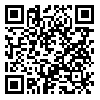Volume 6, Issue 2 (18 2006)
ijdld 2006, 6(2): 183-188 |
Back to browse issues page
Download citation:
BibTeX | RIS | EndNote | Medlars | ProCite | Reference Manager | RefWorks
Send citation to:



BibTeX | RIS | EndNote | Medlars | ProCite | Reference Manager | RefWorks
Send citation to:
Giahi L, Jazayeri A, Rahimi A, Rahmani M, Larijani B. EVALUATION OF THE CORRRELATION BETWEEN ADIPONECTIN, PERCENT OF BODY FAT MASS AND INSULIN SENSITIVITY IN OVER-WEIGHT ADULT MEN. ijdld 2006; 6 (2) :183-188
URL: http://ijdld.tums.ac.ir/article-1-330-en.html
URL: http://ijdld.tums.ac.ir/article-1-330-en.html
Abstract: (9043 Views)
Background: Plasma concentration of adiponectin was found to play an important role in regulation of glucose metabolism, insulin resistance and conditions commonly associated with obesity. The aim of this study was to assess adiponectin level and its relation with percent of body fat mass and insulin sensitivity in over-weight men.
Method: This study was conducted on two groups of type 2 diabetic (n=20) and non-diabetic (n=20) overweight adult men. Serum level of adiponectin (ELIZA), FBS (GOD-PAP), fasting insulin (immunoreactive assay) and body fat mass (Bio-electric impedance) were measured. Insulin sensitivity was calculated using QUICKI.
Results: Diabetics had significantly higher mean of fat mass% than non-diabetics (26.55± 2.87% vs. 22.93±2.64 p< 0.05), despite fairly similar BMIs (27.7 kg/m2). Adiponectin concentration was lower in diabetics (7.77 ±3.53µg/ml) than non-diabetics (8.13 ± 0.03µg/ml) however, this difference was not statistically significant. The negative correlation between adiponcetin and fat mass didn't reach statistical significance. Adiponectin positively related with insulin sensitivity in non-diabetics (r= +0.5 p= 0.04).
Conclusion: Lower level of adiponcetin in diabetics than their non-diabetic counterparts. As well as the positive association of adiponectin with insulin sensitivity confirm the suggested role of decreased level of adiponectin in conditions such as insulin resistance and diabetes.
Method: This study was conducted on two groups of type 2 diabetic (n=20) and non-diabetic (n=20) overweight adult men. Serum level of adiponectin (ELIZA), FBS (GOD-PAP), fasting insulin (immunoreactive assay) and body fat mass (Bio-electric impedance) were measured. Insulin sensitivity was calculated using QUICKI.
Results: Diabetics had significantly higher mean of fat mass% than non-diabetics (26.55± 2.87% vs. 22.93±2.64 p< 0.05), despite fairly similar BMIs (27.7 kg/m2). Adiponectin concentration was lower in diabetics (7.77 ±3.53µg/ml) than non-diabetics (8.13 ± 0.03µg/ml) however, this difference was not statistically significant. The negative correlation between adiponcetin and fat mass didn't reach statistical significance. Adiponectin positively related with insulin sensitivity in non-diabetics (r= +0.5 p= 0.04).
Conclusion: Lower level of adiponcetin in diabetics than their non-diabetic counterparts. As well as the positive association of adiponectin with insulin sensitivity confirm the suggested role of decreased level of adiponectin in conditions such as insulin resistance and diabetes.
Type of Study: Research |
Subject:
General
Received: 2007/02/4 | Accepted: 2007/03/16 | Published: 2013/10/14
Received: 2007/02/4 | Accepted: 2007/03/16 | Published: 2013/10/14
| Rights and permissions | |
 |
This work is licensed under a Creative Commons Attribution-NonCommercial 4.0 International License. |





